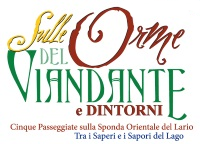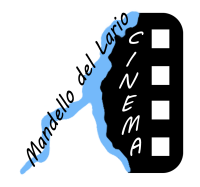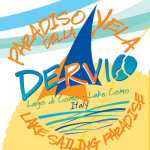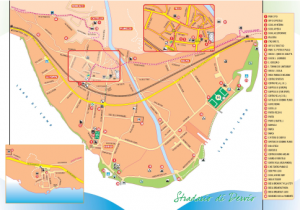DERVIO – TURISMO
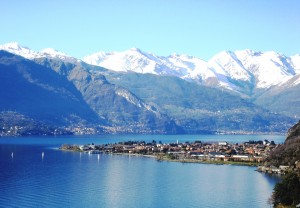 DERVIO – TURISMO Italiano – English
DERVIO – TURISMO Italiano – English
DERVIO è adagiato sulla penisola derviese, che si protende nelle acque del Lario, posta allo sbocco della Valvarrone e solcata dal fiume Varrone.
Di origini molto antiche è stato un borgo importante e fortificato sin dall’epoca romana, per la sua posizione strategica. Grazie alle sue bellezze naturali ed artistiche ed i recenti interventi infrastrutturali, Dervio è una delle località importanti per il turismo del lago di Como ed è considerato il “Paradiso della vela”, con la sua posizione ideale protesa nel lago sempre ventilata e le quattro scuole veliche. Il lungo lago di notevole estensione, con numerose spiagge ed il bel percorso attrezzato immerso nel verde, offre un paesaggio elegante e naturale, dove passeggiare diventa relax e divertimento. Le montagne che circondano Dervio, permettono escursioni in ambienti incontaminati con panorami incantevoli. E’ un paese molto attivo, con parecchie manifestazioni ed iniziative per lo svago di abitanti e turisti.
DA VEDERE:
Ai piedi della montagna troviamo la chiesetta di S.Quirico e Giulitta, uno degli edifici religiosi più antichi della zona, già menzionata in documenti dell’anno 814, con il campanile in pietra a vista in stile romanico edificato attorno al 1080. Nella zona del ‘Borgo’, affacciata sul lago, sorge la chiesa parrocchiale di SS.Pietro e Paolo ( XI secolo ), con il suo campanile di origine romanica.
Accampato su una rupe che domina il paese, il “Castello di Orezia” venne costruito nel tardo medioevo per sbarrare la strada della Valvarrone. Attualmente rimane
un torrione ben conservato, fiancheggiato da avanzi di antiche case. La prima citazione risale al 1039, quando subì un lungo assedio ad opera delle armate
delle tre Pievi lariane.
In località Mai, a 400 metrislm. sul promontorio che sovrasta la parte sud di Dervio, si trovano i ruderi del Castelvedro V-VI sec. La fortificazione sorge in posizione
dominante e dai resti dei muraglioni si può immaginare quanto fossero notevoli le dimensioni del castello. Fu parte del sistema di difesa creato sulle sponde
del Lario a causa delle scorrerie di barbari dalla Rezia.
La frazione di Corenno Plinio rappresenta uno degli angoli più caratteristici del Lago di Como, un luogo dove è ancora possibile provare una forte suggestione storica ed
immaginare le vicende del lago durante il Medioevo. Il borgo medievale si sviluppa attorno al castello ed alla chiesa situati in cima al promontorio. Le antiche case, i particolari uniformi con i portici e le decorazioni, fanno di Corenno un ambiente unico ed irripetibile. E’ venendo dal lago che si gode la vista più suggestiva, con le antiche ville patrizie che dominano la rupe e le ripide “scalotte” che salgono, con i caratteristici gradini intagliati nella roccia, alla piazza in acciottolato. Anche se la sua storia è molto più antica, le sorti di
Corenno sono legate alla famiglia dei conti Andreani, feudatari dal 1271 dell’Arcivescovo di Milano Ottone Visconti. Nel 1863 aggiunse al suo nome l’appellativo di “Plinio”, in onore del console romano Caio Plinio Cecilio Secondo.
Innalzato nel X secolo sui ruderi di un’antica rocca, sorge il Castello di Corenno; la sua destinazione non era quella di abitazione, ma di fortezza – recinto che dovette sopportare numerosi attacchi soprattutto nel XIV secolo, quando Corenno fu incendiata e distrutta nella parte verso il lago. La fortezza, un tempo avamposto dei Visconti, signori di Milano, ora è di proprietà della famiglia Marietti, successori degli Andreani. Con i muri perimetrali a quadrilatero ben conservati, una torre d’ingresso del tipo “a vela” rivolta verso la piazza ed una torre quadrata realizzata in epoca successiva sul lato a monte, consentiva il controllo dell’antico “Sentiero del Viandante”. Sulla piazza a ridosso del castello si trova la chiesa di San Tommaso di Canterbury, XII secolo. Inizialmente era una cappella privata; venne poi consacrata come chiesa effettiva nel 1327, e fu ordinata Parrocchia nel 1566 dall’arcivescovo, Carlo Borromeo. All’interno si trovano resti di antichi affreschi di scuola lombarda del XIV – XVI secolo. Sulla facciata, ai lati dell’ingresso, si possono ammirare i Monumenti tombali dei conti Andreani, feudatari di Corenno. Opere del XIII – XIV secolo, ricchi di elementi scultorei di particolare interesse.
Cartina di Dervio
![]()
DERVIO is located on the derviese peninsula jutting out into the waters of Lake Como, is positioned at the mouth of Valvarrone Valley and is marked by the Varrone River.
It’s origins are very old as it was once an important fortified village due to its strategic position dating back to the Roman period. Thanks to its natural and artistic attractions and to recent interventions on its infrastructures, Dervio has become an important tourist destination on Lake Como and is considered a “Sailing Paradise” due its outstretched and constantly airy position on the lake and its four sailing schools. The significantly long lake, numerous beaches and beautiful equipped exercise course surrounded by nature offer an elegant and natural landscape where walking becomes a moment for fun and relaxation. The mountains surrounding Dervio are perfect for hiking in uncontaminated environments and offer charming views. This town is very active and has many entertaining events and initiatives for its inhabitants and tourists.
TO SEE :
At the foot of the mountain is the small Church of St. Quirico and Giulitta, one of the oldest religious buildings in the area and mentioned in documents as early as 814. Its Romanesque stone bell tower was built about 1080. The parish Church of St. Peter and St. Paul (11th century) and its Romanesque bell tower are in the Borgo district overlooking the lake. The Orezia Castle is perched on a cliff dominating the town. It was built in the late Middle Ages to block the road to Valvarrone Valley. This tower is still in good condition and is flanked by the ruins of ancient dwellings. The first mention of it dates back to 1039 when it sustained a long period of siege by the armies of the Three Larian Parishes.
The ruins of Castelvedro (5-6th centuries) are located in Mai (400m ASL) on the headland dominating the southern part of Dervio. The fortification is in a dominating position and the ruins of its massive walls are an indication of its significant size.It was part of a defence system created on the shores of Lake Como due to the raids by the barbarians of Rhaetia.
The hamlet of Corenno Plinio is one of the most characteristic corners of Lake Como, a place where it is still possible to feel a strong presence of history and imagine the vicissitudes of the lake during the Middle Ages. This medieval village is positioned around the castle and church on top of the headland. The old houses and uniform details with the
porticoes and decorations make Corenno a unique, one-of-a-kind place. The most charming panorama is offered when arriving from the lake, with the old patrician homes dominating the cliff, steep stairways and their characteristic steps eroded in the rock climbing up to the cobblestone square. Although its history is much older, the fate of Corenno is tied to the family of counts Andreani, feudal lords of the Archbishop of Milan Ottone Visconti starting in 1271. The name Plinio was added in 1863 in honour of Roman consul Caio Plinio
Cecilio Secondo. The Corenno Castle was built in the 10th century on the ruins of an ancient fortress; it wasn’t meant to be inhabited but to be used as a fortress-enclosure against the
numerous attacks, especially in the 14th century when the part of Corenno towards the lake was destroyed by fire. Once an outpost for the Visconti family
(lords of Milan), the fortress is now the property of the Marietti family, successors to the Andreani family. Its outer quadrilateral walls (still in good
condition), a sail-type entrance tower facing the piazza and a square tower added later (on the mountain side) allowed the old “Sentiero del Viandante” to be controlled.
A church (initially a private chapel) dedicated to St. Thomas Canterbury (12th century) overlooks the piazza behind the castle. Consecrated as a true church in 1327, it was ordained parish in 1566 by Archbishop Carlo Borromeo. It houses ancient remnants of frescoes from the Lombard school (14-16th centuries). Grave monuments of counts Andreani, feudal lords of Corenno, are on the façade on the sides to the entrance. These are works from the 13-14th centuries enhanced with sculptural elements of particular interest.
